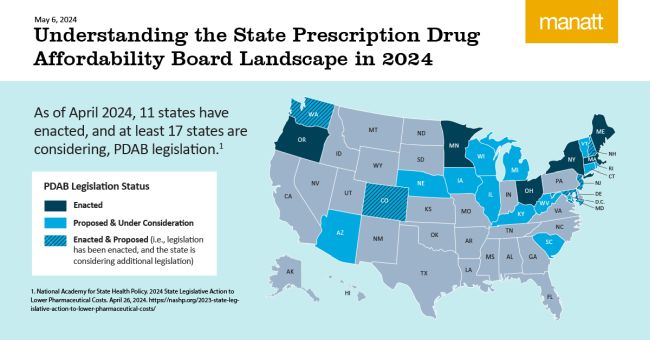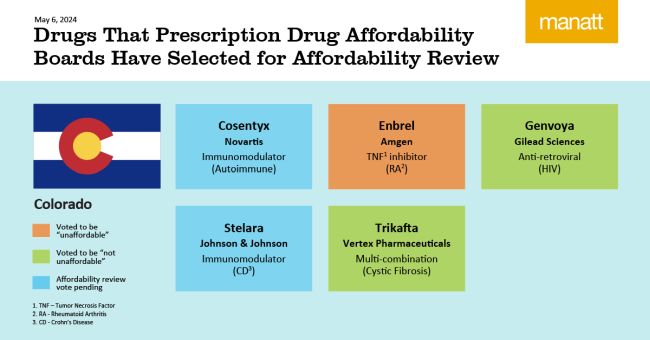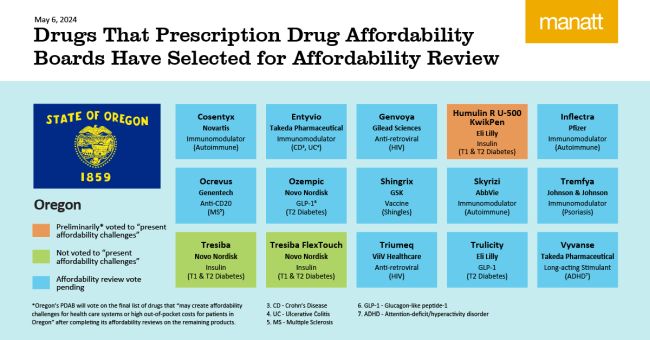- with readers working within the Pharmaceuticals & BioTech industries
- within Real Estate and Construction and Tax topic(s)
Several states are considering or have enacted legislation to create prescription drug affordability boards (PDABs).
PDABs powers vary by state. In some states they can:
- Assess the affordability of prescription drugs and develop recommendations to reduce spending
- Negotiate Medicaid supplemental rebates with manufacturers
- Set upper payment limits (UPLs) on the amount that can be paid for prescription drugs
Colorado's PDAB—the first in the country to begin conducting affordability reviews—was the first to vote to impose an upper payment limit on a drug, Amgen's Enbrel, but it has not decided what that price is. In the meantime, Amgen has sued Colorado, challenging the constitutionality of imposing a payment limit.
Additionally, Oregon is conducting affordability reviews on selected drugs through November 2024.
We will continue to provide updates as these states and others continue to implement and evolve their PDAB programs.
The content of this article is intended to provide a general guide to the subject matter. Specialist advice should be sought about your specific circumstances.






